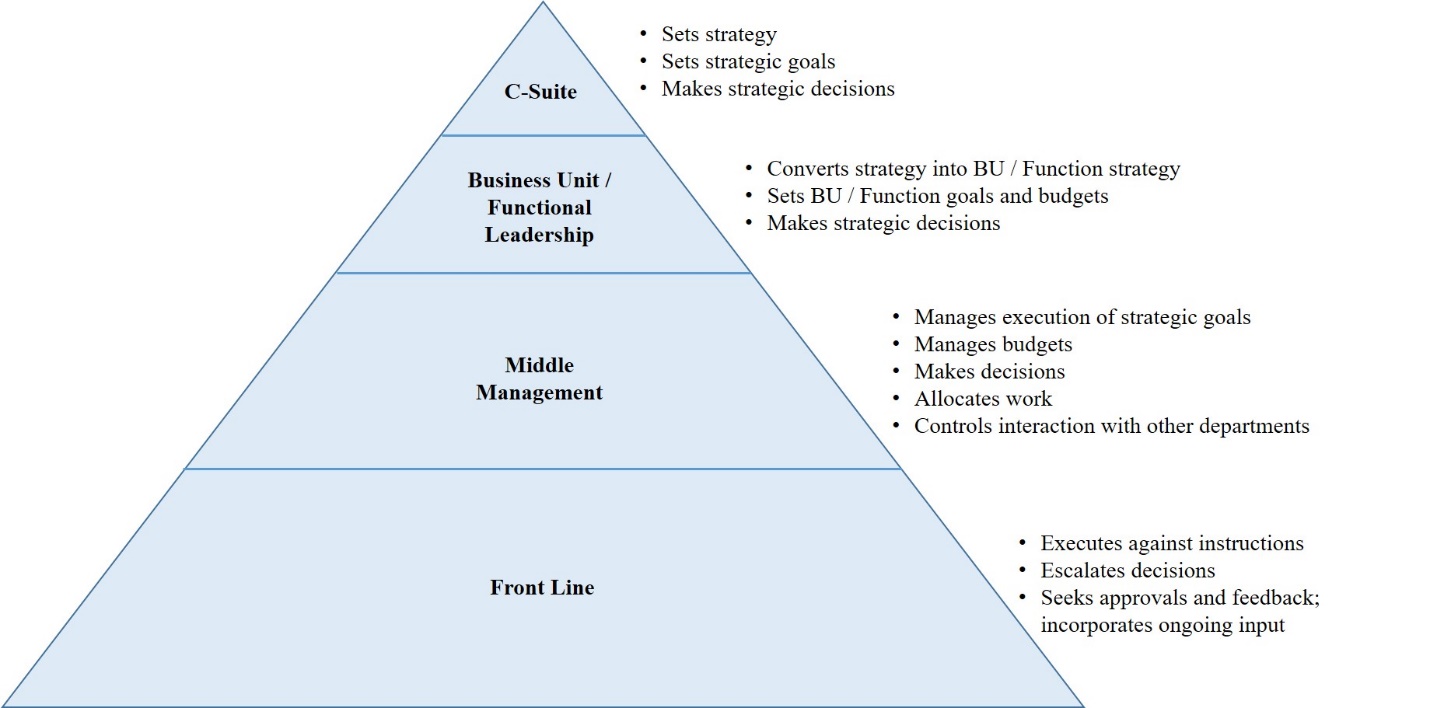
How the Vine of Complexity Strangles Innovation
By Jesse Newton
As organizations grow in size they often become complex, complicated messes. More and more structures, middle managers, coordinating functions, metrics, reports, and templates are added to enable control and transparency of performance across the expanding web of sub-businesses. This incrementally increases complexity within a business and inevitably creates an environment that strangles rich innovation, productivity and engagement.
In a recent study 74% of respondents rated their organization as complex. In this digital age, when technology is fueling rapid changes in consumer preferences and reshaping industries, it is critical that companies innovate well and fast. Companies that are bogged down in slow decision making, risk intolerance, and siloed protectionism are destined to fail.
Fueling the propagating nature of complexity are the 20th century organization structures and management practices that many organizations are holding onto. These 20th century business practices are characterized by dense bureaucratic structures and strict, formal processes with rules and more rules. Traditional best practices told us that we need detailed descriptions of all roles, responsibilities, reporting relationships, decision rights, processes, and rules to get anything done. These things were needed because humans weren’t to be trusted. Installing detailed strict structures meant that leaders could control the output of their people, thereby limiting the risk of mistakes and establishing a baseline of quality. So, as companies grew, they added more and more structures and gradually became complicated messes. The average employee in one of these organizations spends the majority of their day going from one low value meeting to the next, while attempting to stay on top of the mountain of emails that flow into the inbox. These activities distract our focus and soak up time and energy, which significantly limits our ability to engage in deep innovative thinking.

Figure 1. Traditional 20th century vertical hierarchy
But there is hope! Let’s take a big step back and look at our businesses through the lens of simplicity. Let’s take a blank sheet of paper and redesign how work gets done so that we can liberate the intelligence, energy and passions of our people. Let’s get laser focused on the few things that truly matter most. A good place to start is chunking out the redesign into categories; strategy, structure, process, systems, and culture.
Strategy
As organizations grow they often expand into new business units and geographies. They identify new opportunities to diversify a product, go into a peripheral business, and/or enter new markets. They also can acquire other companies to add capability, broaden a product portfolio, or become more vertically integrated. All of this expansion has traditionally resulted in a lot more complexity. More layers separating leaders from the front line, more coordinating groups and an increasingly convoluted communications web leads to strategic focus becoming hazy. A helpful exercise at this level is critically reviewing the strategy. Where and how will the company win in the current and future marketplaces? Once there is clarity on the strategy an analysis of all existing business units needs to be completed and all that are detracting the company from realizing its strategy should be disbanded. Often, this exercise is the first thing a new transformational leader completes upon entering a failing organization. Steve Jobs famously did this at Apple. When he rejoined the company in 1997 he quickly set about quickly reducing the 20+ product groups to four. He transformed Apple from a company that had a presence in every industry segment to one that produced a few products that changed the world.
Structure
Organizational structure often creates the lion’s share of complexity within a company. The 20th century lines and boxes vertical hierarchy was and is the key culprit. The model treats people like cogs in a machine where their output should be controlled and measured. This creates an environment that breeds a reactionary, instruction following workforce that is riddled with anxiety due to success being determined by a manager’s performance review, and is hyper intra competitive as people vie for more power. But there are emerging models that serve to liberate innovation and productivity through providing a high degree of autonomous collaboration. Small teams are assembled with clear parameters set on objectives, timeframes and resources. They then work independently to deliver the objective in any way they see fit. This model is sometimes referred to an “agile organization” or “holacracy” and is being adopted by more and more organizations.
Process
Identifying and defining how work gets done and the various hand-offs or interactions across roles has delivered a ton of value over the past century. But we are now arriving at a time where we have become too process heavy and are often reliant on a defined process being present to complete a task. I would encourage the identification of processes or activities that are currently too taxing or time consuming and look for ways to remove process steps or redesign them to make them simpler and more impactful. Do any of these often unnecessarily convoluted or time consuming processes sound familiar?
- Performance management process
- Annual budgeting process
- Compliance training
- Travel book and expense processing
Systems
Given the speed of technology development it is no wonder that organizations often have a rich mosaic of different IT systems that somehow work together. The implication for the employee is that they have to navigate through four systems to find the information they need to get their work done. This can generate significant complexity and slow productivity. A helpful exercise to undergo is to review how all systems can be simplified and decluttered. What opportunities are there to reduce the number of clicks that people need to make to find what they need? How can content be simplified by reducing words, adding images / videos and deleting sub-pages? I would encourage companies to take advantage of the system interface options out there like Slack, Facebooks’ Workplace or Office 365 that can help to consolidate and simplify how people find information, connect with colleagues and monitor strategic data.
Culture
Do any of these cultural traits sound familiar?
- Management by committee: Decisions are made by multiple individuals and consensus is required, slowing productivity.
- Multiple checks and balances: Decisions have to pass through multiple rounds of approvals, which inhibits speed and can discourage innovation.
- Pursuit of perfection: A strong desire to avoid mistakes leads to unnecessary over-analysis of every piece of work, resulting in wasted time.
- Engage everyone: Meetings are scheduled to keep broad stakeholder groups informed of work that is being completed, resulting in excessive low-value meetings that absorb time.
Organizational cultures can clearly foster norms that drive debilitating complexity. Removing these traits can be achieved by distilling a list of desired behaviors and then reinforcing them through a range of mechanisms, including employing a set influential leaders to model the behaviors and introducing hard stops to prohibit reverting to old ways of working.
What if we could take a fresh look at our businesses, reconsider what is really important, and start to focus our time and energy on those things that matter most. Imagine the positive effect it would have on your people if you told them they now have permission to do more of the work they were hired for. Imagine their sense of liberation if you removed a big chunk of the activities that soak up their time and gave them freedom to think, innovate and execute.
The time is right to simplify work.
About the Author
Jesse Newton is the author of Simplify Work; Crushing Complexity to Liberate Innovation, Productivity and Engagement. He is the founder and CEO of Simplify Work; a global management consulting firm that helps organizations throw off the shackles of debilitating complexity and reignite top performance.


